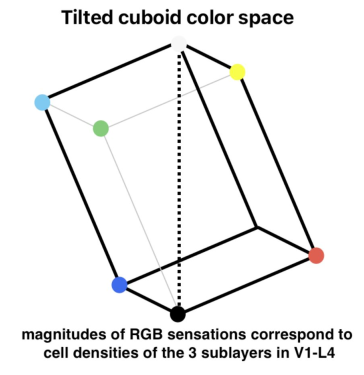
At HVEI-2012, I presented a neurobiologically-based model for trichromatic color sensations in humans, mapping the neural substrate for color sensations to V1-L4—the thalamic recipient layer of the primary visual cortex. In this paper, I propose that V1-L4 itself consists of three distinct sub-layers that directly correspond to the three primary color sensations: blue, red, and green. Furthermore, I apply this model to three aspects of color vision: the three-dimensional (3D) color solid, dichromatism, and ocular agnosticism. Regarding these aspects further: (1) 3D color solid: V1-L4 is known to exhibit a gradient of cell densities from its outermost layer (i.e., its pia side) to its innermost layer (i.e., its white matter side). Taken together with the proposition that the population size of a cell assembly directly corresponds with the magnitude of a color sensation, it can be inferred that the neurobiologically-based color solid is a tilted cuboid. (2) Chromatic color blindness: Using deuteranopia as an example, at the retinal level, M-cones are lost and replaced by L-cones. However, at the cortical level, deuteranopia manifests as a fusion of the two bottom layers of V1-L4. (3) Ocular agnosticism: Although color sensation is monocular, we normally are not aware of which eye we are seeing with. This visual phenomenon can be explained by the nature of ocular integration within V1-L4. A neurobiologically-based model for human color sensations could significantly contribute to future engineering efforts aimed at enhancing human color experiences.

Colorimetry is a fascinating piece of science that Maxwell began in 1860. From the rigorous scientific point of view, the series of assumptions on which it is based have formed, during time, a substrate of constraints, making its use unpractical for many of today tasks in color management. In everyday applications, these constraints are often not considered, producing a series of best practices and models that carry on mismatches between measures and the actual color sensation as perceived by the observers. This paper presents a synthetic critical overview on colorimetry research and its everyday use.